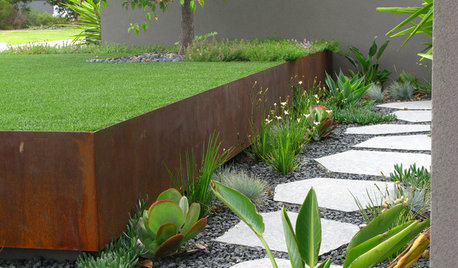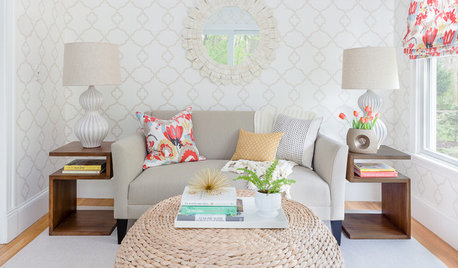Things to ask a landscaper?
User
13 years ago
Related Stories

COFFEE WITH AN ARCHITECTA Few Things I Would Like to Ask Frank Lloyd Wright
It could take a lifetime to understand Frank Lloyd Wright's work — less if we had answers to a few simple questions
Full Story
LANDSCAPE DESIGN7 Questions to Ask Before Laying Stepping Stones
These broken-up pathways invite you to put a spring in your step — while adding functionality to the garden
Full Story
MOST POPULAR8 Questions to Ask Yourself Before Meeting With Your Designer
Thinking in advance about how you use your space will get your first design consultation off to its best start
Full Story
WORKING WITH PROS12 Questions Your Interior Designer Should Ask You
The best decorators aren’t dictators — and they’re not mind readers either. To understand your tastes, they need this essential info
Full Story
REMODELING GUIDESConsidering a Fixer-Upper? 15 Questions to Ask First
Learn about the hidden costs and treasures of older homes to avoid budget surprises and accidentally tossing valuable features
Full Story
SELLING YOUR HOUSEFix It or Not? What to Know When Prepping Your Home for Sale
Find out whether a repair is worth making before you put your house on the market
Full Story
SELLING YOUR HOUSE15 Questions to Ask When Interviewing a Real Estate Agent
Here’s what you should find out before selecting an agent to sell your home
Full Story
TASTEMAKERSAsk an Expert: What Is the One Design Rule You Live By?
Eight home experts share their top design rules
Full Story
WORKING WITH PROS10 Questions to Ask Potential Contractors
Ensure the right fit by interviewing general contractors about topics that go beyond the basics
Full Story
DECORATING GUIDESAsk an Expert: How to Decorate a Small Spare Room
It can be difficult to know what to do with that tiny extra room. These design pros offer suggestions
Full Story







tinam61
Ideefixe
Related Discussions
Things to consider before you start asking questions
Q
Good things come to those who ask!
Q
Things you wish you'd asked
Q
Macv, could I ask you one more thing? (Anyone else chime in!)
Q
natal
User
barb5
natal
stinky-gardener
neetsiepie
UserOriginal Author
daisyinga
Bumblebeez SC Zone 7
barb5
barb5
mahatmacat1
Bumblebeez SC Zone 7
neetsiepie
mahatmacat1
Bumblebeez SC Zone 7
barb5
Bumblebeez SC Zone 7
stinky-gardener
natal
UserOriginal Author
Bumblebeez SC Zone 7
jerseygirl_1
tinam61
maire_cate
franksmom_2010
natal
franksmom_2010
natal
barb5
busybee3
mahatmacat1
UserOriginal Author
natal
tinam61
Bumblebeez SC Zone 7
natal
UserOriginal Author